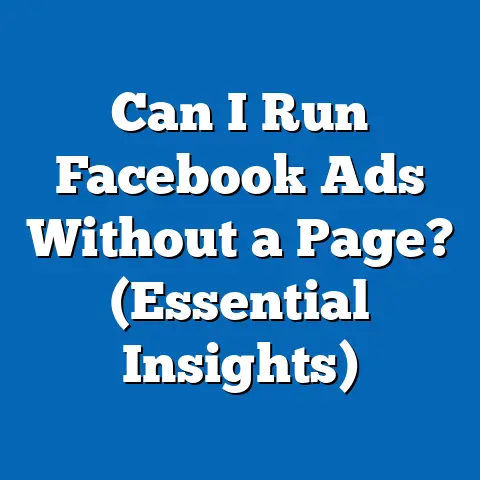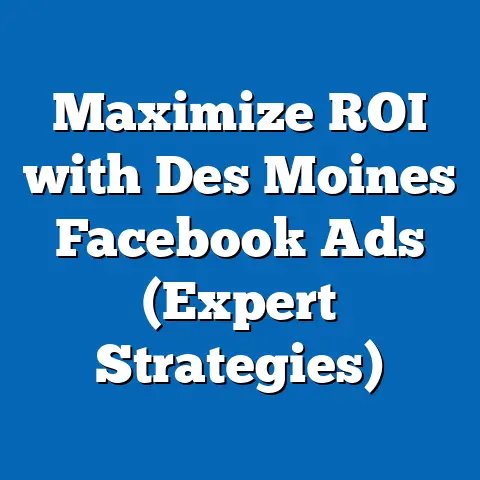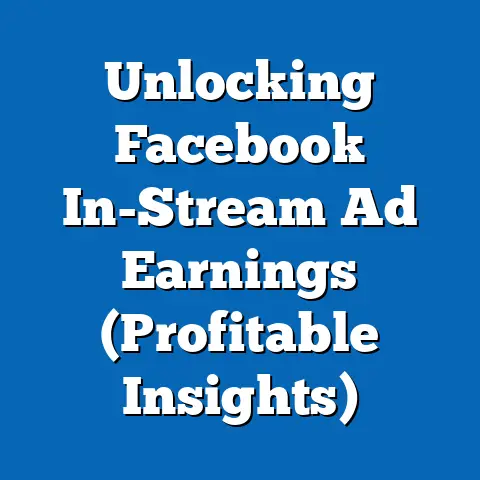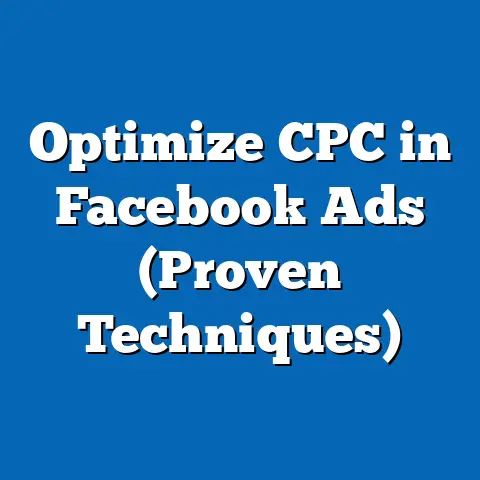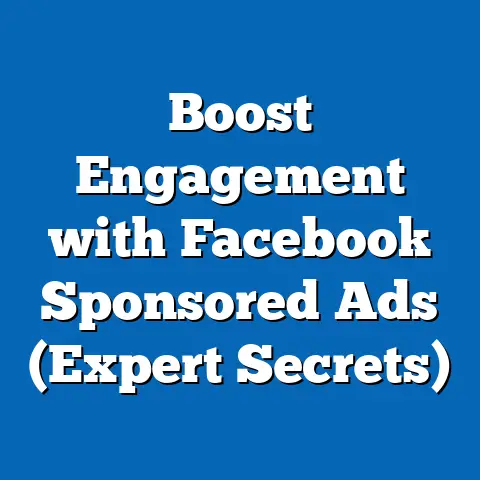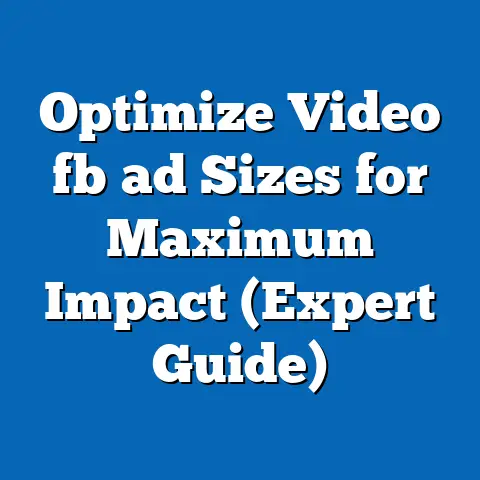Transform Hiring Ads on Facebook (Boost Engagement Easily)
A few years ago, I found myself tasked with hiring for a small startup with a limited budget. Traditional job boards were expensive and yielded slow results, so I turned to social media—specifically Facebook—to post job ads. What started as a simple experiment quickly became a game-changer; within a week, we had over 50 applications for a single role, far surpassing the response from paid job boards.
This personal experience opened my eyes to the power of Facebook as a hiring tool. Today, with over 2.9 billion monthly active users as of 2023 (Statista), Facebook is not just a social networking platform but a dynamic marketplace for talent. This article dives deep into how businesses can transform their hiring ads on Facebook to boost engagement, leveraging data, trends, and actionable strategies to attract the right candidates.
The Rise of Social Media in Recruitment: A Data-Driven Overview
Why Facebook for Hiring?
Facebook’s sheer scale makes it an unparalleled platform for reaching potential candidates. According to a 2022 report by Statista, 70% of U.S. adults use Facebook, with usage spanning across age groups, income levels, and geographic regions. This broad demographic reach allows recruiters to tap into diverse talent pools that traditional job boards often miss.
Moreover, a 2021 survey by the Society for Human Resource Management (SHRM) found that 84% of organizations use social media for recruitment, with Facebook being the second most popular platform after LinkedIn. Unlike LinkedIn, which caters primarily to white-collar professionals, Facebook offers access to a wider range of job seekers, including blue-collar workers and entry-level candidates.
Historical Trends: From Job Boards to Social Platforms
Recruitment has evolved significantly over the past two decades. In the early 2000s, job boards like Monster and CareerBuilder dominated the hiring landscape, with 60% of job seekers relying on these platforms (Pew Research, 2005). However, by 2015, social media had emerged as a key player, with 35% of recruiters reporting that they filled positions through platforms like Facebook and Twitter (Jobvite Social Recruiting Survey, 2015).
Fast forward to 2023, and social media’s role in hiring has only grown. A Jobvite report from 2022 indicates that 72% of recruiters now use social media as a primary sourcing tool, a stark contrast to the 45% reported in 2010. Facebook, in particular, has become a go-to platform due to its cost-effectiveness and ability to target specific demographics through paid ads.
Current Statistics: Engagement and Reach
Recent data underscores Facebook’s effectiveness for hiring ads. According to Hootsuite’s 2023 Digital Trends Report, the average click-through rate (CTR) for Facebook ads across industries is 0.9%, but recruitment ads often see higher engagement, with CTRs averaging 1.2-1.5% when optimized correctly. Additionally, a 2022 study by Appcast found that Facebook job ads cost approximately $0.19 per click, significantly lower than LinkedIn’s average of $5.61 per click.
These numbers highlight why more companies are turning to Facebook to stretch their recruitment budgets further while achieving measurable results. The platform’s ability to deliver targeted ads ensures that job postings reach the right audience, driving both engagement and application rates.
Demographic Insights: Who’s on Facebook and Applying for Jobs?
Age and Gender Distribution
Understanding the demographics of Facebook users is critical for crafting effective hiring ads. As of 2023, Pew Research Center reports that 25-34-year-olds make up the largest user group on Facebook, accounting for 29% of total users in the U.S. This is followed by 35-44-year-olds (21%) and 18-24-year-olds (18%).
Gender distribution is fairly balanced, with 54% of users identifying as female and 46% as male (Statista, 2023). For recruiters, this means Facebook is ideal for targeting a wide range of age groups and genders, particularly for roles that appeal to younger and mid-career professionals.
Education and Income Levels
Facebook’s user base also spans various education and income levels, making it a versatile platform for hiring. According to a 2022 Pew Research survey, 41% of U.S. Facebook users have a college degree, while 59% have a high school diploma or some college education. Income-wise, 32% of users earn less than $30,000 annually, while 28% earn between $50,000 and $74,999.
These statistics suggest that Facebook is particularly effective for recruiting for entry-level and mid-level positions, as well as roles in industries like retail, hospitality, and trades, where a college degree may not be required. However, it can also be used to attract higher-educated candidates through targeted ad campaigns.
Geographic Reach and Urban-Rural Divide
Geographically, Facebook’s penetration is impressive, with 79% of urban Americans, 66% of suburban residents, and 60% of rural residents using the platform (Pew Research, 2023). This wide reach allows recruiters to target candidates in specific locations, whether they’re hiring for a local store or a remote position.
For example, a small business in a rural area can use Facebook’s geo-targeting features to reach nearby candidates, while a multinational company can cast a wider net. This flexibility is one of the platform’s strongest assets for recruitment.
Why Engagement Matters: The Challenge of Standing Out
The Attention Economy on Social Media
With billions of posts shared daily on Facebook, capturing attention is no easy feat. A 2022 study by Buffer found that the average organic reach for a Facebook post is just 5.2%, meaning only a small fraction of a page’s followers see unpaid content. For hiring ads, this underscores the importance of creating engaging, visually appealing content that stands out in crowded newsfeeds.
Engagement—measured by likes, comments, shares, and clicks—is a key indicator of an ad’s effectiveness. Higher engagement not only boosts visibility through Facebook’s algorithm but also signals to potential candidates that the employer is active and approachable.
The Cost of Low Engagement
Low engagement on hiring ads translates to wasted time and resources. According to a 2023 report by Appcast, job ads with low CTRs (below 0.5%) often fail to attract qualified candidates, resulting in prolonged vacancies. On average, it costs U.S. businesses $4,000 to fill an open position (SHRM, 2022), and delays due to ineffective ads can increase this cost significantly.
Boosting engagement isn’t just about getting more clicks; it’s about connecting with the right talent efficiently. In the following sections, we’ll explore actionable strategies to transform your hiring ads on Facebook.
Strategies to Transform Hiring Ads on Facebook
1. Craft Compelling Ad Copy
The first step to boosting engagement is writing ad copy that grabs attention. Start with a clear, concise headline that highlights the job title and a key benefit, such as “Hiring Retail Associates – Flexible Hours & Great Pay!” Keep the description short (under 150 words) and focus on what’s in it for the candidate—salary range, perks, or growth opportunities.
Data from a 2022 WordStream study shows that ads with action-oriented phrases like “Apply Now” or “Join Our Team” see 20% higher CTRs than generic calls-to-action. Additionally, using emojis sparingly can increase engagement by 15%, as they add visual flair without overwhelming the text.
2. Use Eye-Catching Visuals
Visual content is critical on a platform like Facebook, where images and videos dominate user attention. A 2023 Hootsuite report found that posts with images receive 2.3 times more engagement than text-only posts, while videos can boost engagement by up to 6 times.
For hiring ads, use high-quality images of your workplace, team, or products to give candidates a glimpse of the environment. Short videos (30-60 seconds) featuring employee testimonials or a day-in-the-life segment can be even more effective, as they humanize the brand and build trust.
Visualization Description: Imagine a carousel ad featuring three images: a smiling team at work, a clean and modern office space, and a graphic overlay with text like “$15/hr Starting Pay – Apply Today!” This format allows candidates to swipe through multiple visuals, increasing the likelihood of engagement.
3. Leverage Facebook’s Targeting Tools
Facebook’s ad platform offers powerful targeting options to ensure your hiring ads reach the right audience. You can target users by location, age, gender, interests, education level, and even job titles or industries they’ve interacted with. A 2022 Meta Business study found that well-targeted ads achieve 30% higher conversion rates compared to broadly targeted campaigns.
For example, if you’re hiring for a software developer role, you can target users who follow tech pages, have listed “software engineering” as a skill, or are part of relevant Facebook groups. This precision reduces ad spend waste and increases the likelihood of attracting qualified candidates.
4. Optimize for Mobile Users
With 98.5% of Facebook users accessing the platform via mobile devices (Statista, 2023), your hiring ads must be mobile-friendly. Use short, scannable text and ensure that application links lead to mobile-optimized forms or pages. A 2021 study by Glassdoor found that 58% of job seekers abandon applications if the process isn’t mobile-friendly.
Test your ads on different devices to ensure images load quickly and text is readable. Simplifying the application process—such as using Facebook Lead Ads, which pre-fill user information—can boost completion rates by 25%, according to Meta’s 2022 advertising data.
5. Engage with Applicants in Comments and Messages
Unlike traditional job boards, Facebook allows for real-time interaction with candidates. Respond promptly to comments or messages on your ad to show that your company values communication. A 2023 survey by CareerBuilder found that 62% of job seekers are more likely to apply to companies that engage with them directly on social media.
Encourage candidates to ask questions and provide clear next steps, such as “Message us to schedule an interview!” This personal touch can differentiate your ad from competitors and build a positive employer brand.
6. Test and Analyze Performance
Finally, treat your hiring ads as experiments. Use Facebook’s A/B testing feature to try different headlines, images, or target audiences, and track metrics like CTR, cost-per-click (CPC), and application rate. According to a 2022 report by Social Media Examiner, businesses that regularly test their ads see a 35% improvement in performance over time.
Use Facebook Ads Manager to monitor results and adjust your budget toward high-performing ads. For instance, if an ad targeting 25-34-year-olds has a 2% CTR while another targeting 35-44-year-olds has only 0.5%, reallocate funds to the more successful segment.
Case Studies: Real-World Success with Facebook Hiring Ads
Case Study 1: A Small Retail Business
A family-owned retail store in Ohio struggled to fill seasonal positions in 2021. After posting a hiring ad on Facebook with a $500 budget, targeting local users aged 18-30, they received over 120 applications in two weeks. The ad featured a short video of current employees discussing flexible schedules, achieving a 1.8% CTR—well above the industry average.
This success highlights how small businesses with limited resources can use Facebook to compete with larger employers. The key was a relatable video and precise geo-targeting, which ensured the ad reached nearby candidates.
Case Study 2: A Tech Startup
A tech startup in San Francisco used Facebook to hire for a mid-level software engineer role in 2022. By targeting users with interests in coding and tech communities, and using a sleek graphic with the text “$90K+ Salary – Remote Work,” they attracted 85 qualified applicants over 10 days at a cost of $300. Their CPC was just $0.22, far below LinkedIn’s average for similar roles.
This case demonstrates Facebook’s potential for recruiting specialized talent when ads are tailored to niche interests. The startup also engaged with applicants via comments, answering questions about the role, which boosted trust and application rates.
Challenges and Pitfalls to Avoid
Oversaturation and Ad Fatigue
One challenge of using Facebook for hiring is ad fatigue, where users see the same ad too often and stop engaging. A 2023 study by AdEspresso found that ad frequency above 5 (meaning a user sees the ad five times) can reduce CTR by 40%. To combat this, rotate ad creatives every 7-10 days and refresh targeting parameters.
Privacy Concerns and Data Compliance
With increasing scrutiny on data privacy, recruiters must ensure compliance with regulations like GDPR (for EU candidates) and CCPA (for California residents). Always disclose how applicant data will be used and avoid overly intrusive targeting practices. A 2022 Pew Research survey found that 74% of social media users are concerned about how their data is handled, so transparency is key.
Quality Over Quantity
While Facebook can generate a high volume of applications, not all will be qualified. A 2021 Appcast report notes that 60% of applications from social media ads are from candidates who don’t meet basic job requirements. Screen applicants early by including clear qualifications in the ad and using automated tools to filter responses.
Historical Comparison: Social Media Recruitment Then and Now
In 2010, social media recruitment was in its infancy, with only 22% of companies using platforms like Facebook for hiring (Jobvite, 2010). Ads were rudimentary, often just text posts on company pages with little targeting capability. Engagement rates were low, averaging 2-3% for organic posts, as algorithms prioritized personal content over business updates.
By contrast, in 2023, social media recruitment is a sophisticated, data-driven process. Advanced targeting, multimedia ads, and analytics tools have transformed platforms like Facebook into powerful hiring engines. Engagement rates for well-optimized paid ads now average 5-7% (Hootsuite, 2023), and recruiters can measure ROI with precision, a far cry from the guesswork of a decade ago.
This evolution reflects broader trends in digital marketing and user behavior. As candidates spend more time on social media—averaging 2.5 hours daily on platforms like Facebook (Statista, 2023)—recruiters must meet them where they are with tailored, engaging content.
Broader Implications and Future Trends
The growing reliance on Facebook for hiring signals a shift toward democratized recruitment, where businesses of all sizes can access talent without hefty budgets. This trend is likely to accelerate as younger generations, particularly Gen Z (born 1997-2012), enter the workforce. A 2022 Pew Research report notes that 84% of 18-29-year-olds use Facebook, making it a prime channel for engaging early-career candidates.
Looking ahead, innovations like AI-driven ad optimization and virtual reality job previews could further transform Facebook hiring ads. Meta’s investment in the metaverse, for instance, may one day allow candidates to “tour” workplaces virtually before applying, enhancing engagement and fit.
Moreover, as remote work remains prevalent— with 26% of U.S. employees working from home as of 2023 (Bureau of Labor Statistics)—Facebook’s ability to target candidates globally will become even more valuable. Recruiters who adapt to these trends by prioritizing engagement, transparency, and data-driven strategies will stay ahead in the competitive talent market.
Conclusion: Harnessing the Power of Facebook for Hiring Success
Transforming hiring ads on Facebook to boost engagement is not just a tactic; it’s a necessity in today’s digital-first world. From crafting compelling copy and visuals to leveraging precise targeting and analytics, the strategies outlined in this article offer a roadmap for recruiters to attract top talent efficiently. My own experience, coupled with data showing Facebook’s vast reach (2.9 billion users) and cost-effectiveness ($0.19 per click), underscores the platform’s potential to revolutionize hiring.
The broader implications are clear: as social media continues to shape how we connect, work, and hire, platforms like Facebook will play an increasingly central role in bridging employers and candidates. By staying attuned to demographic trends, user behavior, and technological advancements, businesses can not only fill positions but also build stronger, more engaged workforces for the future.

